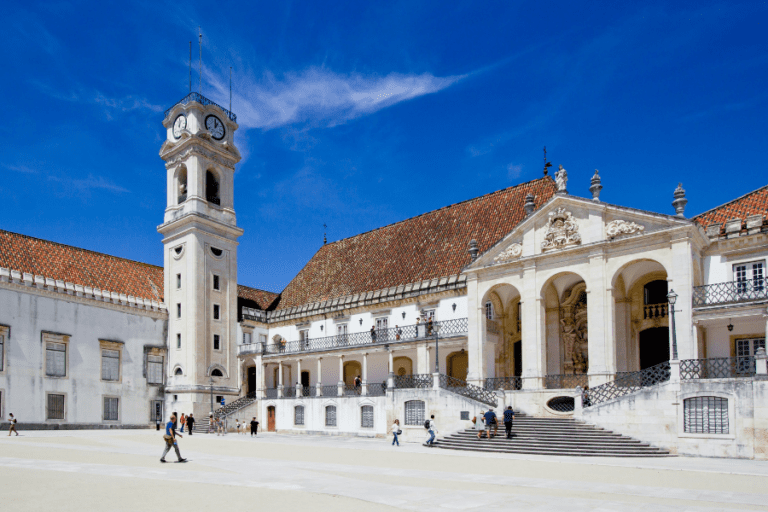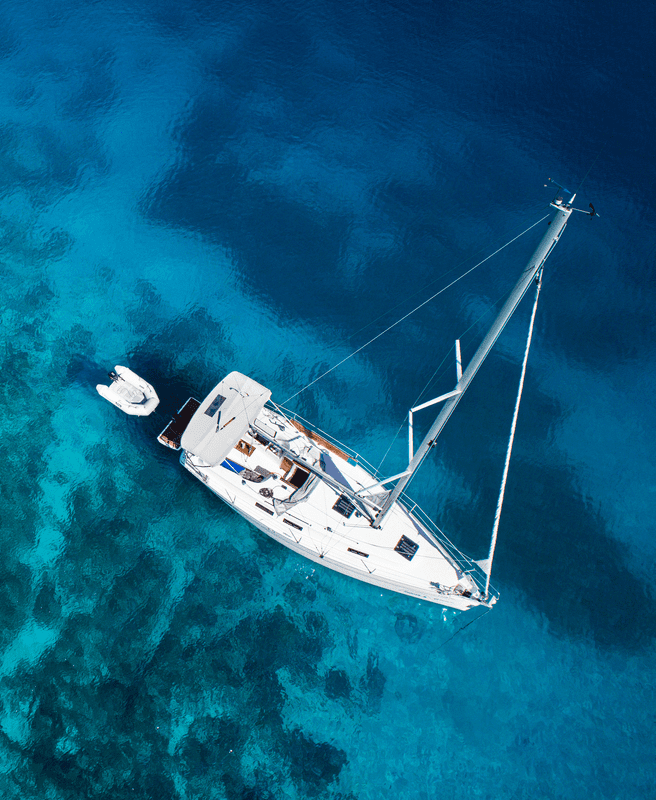- Home
- Articles
- Freedom
- 10 Easiest Countries to Immigrate to: Passports for Investors and Professionals
10 Easiest Countries to Immigrate to: Passports for Investors and Professionals
July 23, 2025
The freedoms we enjoy in our so-called ‘borderless’ world are being steadily dismantled.
In its place, a complex web of shifting regulations and political anxieties has taken root, affecting long-term planning for global citizens.
As established pathways close and new hurdles appear, the definition of an ‘easy’ country to immigrate to is subject to change.
It now points to the need for something more valuable to entrepreneurs and investors: simple predictability.
That predictability is found in legacy immigration frameworks such as citizenship by birth, which gives citizenship to anyone born in a country. Similarly, citizenship by descent (CBD) confers citizenship on people who can trace their lineage to a parent or grandparent.
For those without ancestral claims but with enough capital, modern investment immigration programs hold the key.
A well-designed residency by investment (RBI) program creates a clear, transactional route, turning a real estate purchase or fund investment into a permanent residence permit that can later mature into citizenship.
Furthermore, citizenship by investment routes leads to a direct second passport.
Even new categories like digital nomad visas are beginning to provide pathways for remote professionals to convert temporary stays into permanent status.
The true calibre of these programs, however, depends on how accessible they are. Success hinges not only on the transparency of investment thresholds but also on the efficiency of their administration. A consistent, documented process free from ambiguous requirements or arbitrary decisions is just as important as the cost.
The long-term tax implications also need to be studied. This includes a review of whether a country uses a residency-based or a territorial tax system and if it imposes wealth and inheritance taxes.
The following list explores which countries meet these demanding criteria, identifying the most efficient options available today.
1. Immigrate to Portugal
To write Portugal off after the closure of its popular real estate investment option would be a mistake.
The country hasn’t retreated from investment migration but has instead pivoted its focus.
The Golden Visa program continues, now centred on a €500,000 investment into qualifying venture capital or private equity funds. An alternative route exists through a €250,000 donation to a project supporting national cultural heritage.
For remote workers and entrepreneurs, the digital nomad (D8) visa can lead to citizenship within five years without the need for a large investment. Currently, you need to prove that you make around €3,480 a month from outside the country.
Beyond these routes, Portugal also has a notable citizenship by descent program, which includes provision for those who can document Sephardic Jewish ancestry.
2. Immigrate to Spain
The termination of the real estate option in Spain’s golden visa program was a definitive policy shift that redirected attention to the country’s other immigration pathways.
The Digital Nomad Visa for remote professionals requires a minimum monthly income of approximately €2,760 to secure temporary residency. The timeline for citizenship after this is five to ten years, which may be long, but comes at no additional cost.
Spain’s laws on citizenship by descent create one of the fastest ways to gain a powerful passport. It offers an accelerated two-year path to citizenship for nationals of Ibero-American countries, the Philippines and Equatorial Guinea.
3. Immigrate to Greece
In a European landscape marked by program closures and strategic pivots, Greece stands out for its consistency.
The Greek Golden Visa remains a benchmark for simplicity, directly linking a residency permit to real estate acquisition. While investment minimums have risen in sought-after areas like Athens and Mykonos, the program’s appeal, speed and transparency remain intact.
For professionals and creatives, Greece’s digital nomad visa is a viable alternative. It secures a foothold in the EU through proof of a stable income rather than a capital outlay, though the timeline is longer than in Portugal.
Aside from these options, the ability to claim citizenship via ancestry remains a good option for anyone with Greek heritage.
4. Immigrate to Argentina
Economic and political turbulence in Argentina often obscures one of the world’s fastest paths to a second passport.
While other countries take years to become naturalised, in Argentina, it only takes two years of legal residency before an application can be filed.
A foreign national can secure a temporary residence permit, often as a person of independent means or ‘rentista’, and the citizenship countdown begins immediately.
The country’s approach is anchored in a constitutional tradition that also grants unconditional birthright citizenship (jus soli).
Lastly, keep in mind that Argentina is currently planning to launch its own CBI program with a minimum investment amount of US$500,000 in qualifying projects.
5. Immigrate to St Kitts and Nevis
Not all paths to a second passport demand years of residency.
The world of citizenship by investment (CBI), a model pioneered in the Caribbean, is an accelerated alternative.
St Kitts and Nevis established the first CBI programme in 1984, creating a legal route to a second passport in return for an investment.
The primary option is a minimum contribution of US$250,000 to the country’s Sustainable Island State Contribution (SISC).
A real estate path also exists, requiring a minimum investment of US$325,000 in a government-approved project.
The entire process can be handled remotely, with no residency or visit requirements, and a new passport can be obtained in approximately one year.
6. Immigrate to Dominica
While St Kitts and Nevis created the CBI model, other Caribbean nations have adopted it and given it their own flavour.
Dominica stands out by pairing a reputable and efficient program with one of the most cost-effective investment thresholds available.
In terms of requirements, the program offers two routes to a second passport.
The most cost-effective path for a single applicant is a direct contribution of US$200,000 to the country’s Economic Diversification Fund.
The alternative is a minimum investment of US$200,000 (for a family of four) in a government-approved real estate project. Both options are processed efficiently, with no requirement to visit the island.
7. Immigrate to Turkey
Turkey’s CBI program grants citizenship in a major economy at the crossroads of Europe and Asia.
The program’s engine is real estate. An investor can acquire Turkish citizenship through a minimum property purchase of US$400,000, with no donation required.
The process is known for its efficiency, typically concluding within six to nine months, and grants the full rights of Turkish citizenship.
8. Immigrate to Paraguay
In a world of increasingly complex residency programs and seven-figure investment demands, Paraguay stands apart for its radical simplicity.
The country’s legal framework has a direct route to permanent residency, requiring a local bank deposit of only around US$5,000 to secure the status from day one.
Obtaining this permit starts the three-year countdown to naturalisation eligibility.
The result is an exceptionally low-cost and low-friction pathway to a powerful second passport with visa access to the EU’s Schengen Area and throughout the Mercosur bloc.
9. Immigrate to Ireland
Ireland’s pathway to EU citizenship is now almost entirely ancestral.
Following the closure of its Immigrant Investor Programme, the country’s focus has returned to citizenship by descent. Eligibility extends back to having an Irish-born grandparent, whose descendant can claim citizenship through a straightforward registration on the Foreign Births Register.
A successful registration confers full Irish citizenship, with the unrestricted right to live and work across the EU and the United Kingdom.
10. Immigrate to Ecuador
For those seeking a citizenship path in a stable, dollarised economy, Ecuador might be the answer.
The country combines a rapid three-year naturalisation timeline with financially accessible residency visa options, creating a straightforward route in South America.
The most common path is the rentista visa, requiring proof of a stable passive income of at least US$1,410 (circa) per month.
An alternative is the investor visa, established through a minimum investment of US$47,000 (circa) in either local real estate or a bank’s certificate of deposit.
Both routes lead directly to temporary residency, with a pathway to permanency and eventual citizenship.
Easiest Countries to Immigrate to from the US
The US passport, once a symbol of global access, now carries financial obligations that follow its holder around the globe.
The culprit is America’s unique system of citizenship-based taxation, a policy that obligates citizens abroad to file taxes to the IRS, regardless of where their income is earned.
An ‘easy’ country for an American is, therefore, one with a favourable tax treaty, a territorial tax system or Foreign Earned Income Exclusion to prevent double taxation.
True ease also means a low cultural and linguistic barrier, a place where business and life can be conducted with minimal friction.
A handful of countries have frameworks that are up to this challenge:
- Portugal’s D8 visa and its specialised tax regime offer Americans a high-quality European lifestyle with a predictable and efficient tax structure for foreign income.
- Panama’s territorial tax system and its use of the US dollar combine to remove both double taxation on foreign income and currency risk for American investors.
- Malta’s status as an English-speaking EU nation, combined with a non-domiciled tax system that protects foreign income, creates a predictable environment for managing global business interests.
- Mexico’s straightforward residency process, based on clear economic solvency thresholds, and its large American expat communities work together to make relocation simple.
- In Puerto Rico, a US territory, US citizens do not need work permits or visas to live and work there and may be eligible for a federal income tax exemption on income earned within the territory.
Easiest Countries to Immigrate to in 2025: FAQs
Paraguay is often cited as one of the easiest countries to immigrate to, with a straightforward process to gain residency by proving you have around US$5,000 in a local bank. Argentina is also popular for its two-year immigration process to obtain citizenship.
For skilled workers, Canada is often the most accessible English-speaking country due to its clear, points-based Express Entry system. Ireland can also be straightforward if you have recent Irish ancestry.
Historically, the United States has accepted the largest number of immigrants by total volume each year. However, countries like Canada and Australia often have higher immigration rates relative to their population.
This is a personal choice, but countries like Canada, Australia and New Zealand are popular for their high quality of life, job opportunities and welcoming attitude towards new residents. Obtaining permanent residency, a temporary resident visa or dual citizenship is often more accessible to skilled professionals in these places.
Countries like North Korea, Bhutan and Vatican City are famously difficult to immigrate to, with extremely restrictive or near-impossible paths to permanent residency or citizenship for most people.
Finland consistently ranks as one of the world’s happiest countries. Its high quality of life, social support, and stability make it an attractive destination for those seeking to obtain permanent residency and a happy new home.
If you want to move abroad or gain a second passport, some of the easiest and fastest options for dual citizenship are investment programs, including those offered by Caribbean countries. Some European countries offer citizenship by descent.
Go Where You’re Treated Best
Finding an ‘easy’ country to immigrate to is a key step in our ‘go where you’re treated best’ philosophy.
A nation that creates an easy, predictable path for your talent and capital is, by definition, treating you better than one that erects barriers and creates uncertainty.
The countries on this list also embody other core principles of this philosophy.
Ireland’s non-domiciled tax system, for example, protects global assets from local taxation.
The UAE’s zero-per-cent personal income tax greatly simplifies your financial planning and future.
Spain’s Digital Nomad Visa is a low-cost option for remote entrepreneurs seeking EU residency.
These are all examples of jurisdictions competing to treat you best.
However, the right global strategy is always personal.
One person’s ideal tax structure, for instance, will not suit another who prioritises lifestyle and travel freedom.
A truly holistic strategy involves assembling a portfolio of jurisdictions that work in harmony.
An entrepreneur might use one residency to legally pay zero tax on their active income, bank in another for asset protection and hold an ancestral passport for ultimate mobility.
Building this kind of multi-jurisdictional plan that lowers taxes, grows wealth and increases freedom is complex work that requires expert advice.
If you are ready to create your own bespoke strategy, talk to the Nomad Capitalist team.



How To Get the Portugal Startup Visa in 2025: Rules, Benefits, and Costs
The Portugal Startup Visa is a residency program for non-EU citizens who want to bring innovative business ideas to Portugal. The program is suitable for tech-driven companies and has no minimum investment requirements, which makes it appealing to international entrepreneurs. In this guide, we’ll explore the Portugal Startup Visa and cover: What Is the Startup […]
Read more

Portugal Residency Requirements: Eligibility and Application Process Explained
Portugal allows foreigners to obtain residency permits and live in the country for an extended period. Depending on the type of visa, foreigners can secure temporary or permanent residence and eventually apply for Portuguese citizenship. In this guide, we will outline the Portugal residency requirements for expats, focusing on the following: Obtaining Portuguese Residency: An […]
Read more

Portugal Entrepreneur Visa: Benefits, Requirements, and Application
If you wish to relocate your business to Portugal or start a new one in the country, obtaining the Portugal Entrepreneur Visa (also known as the D2 Visa) is among the first steps you should take. To help you complete the process as effortlessly as possible, this guide will cover: What Is the Portugal D2 […]
Read more




